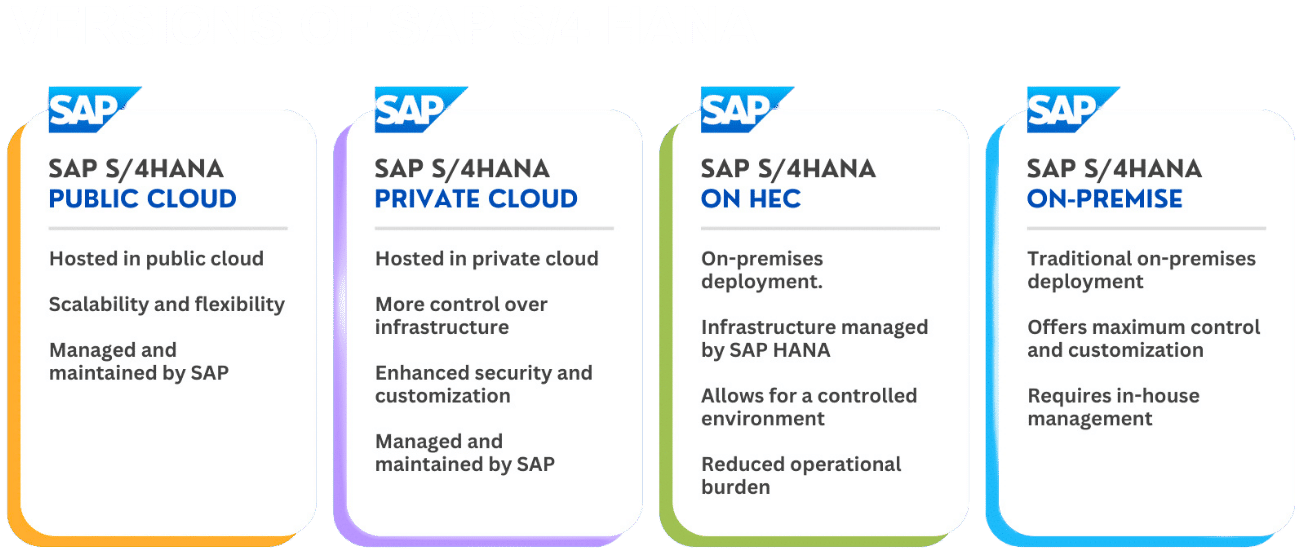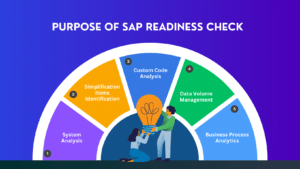Migration
The 2027 Deadline Looms: Preparing for Your ECC to S/4HANA Migration
SAP's ECC support sunset in 2027 is no longer a distant horizon. While the initial 2025 deadline saw an extension due to slow adoption, this final date appears quite firm. Migrating from ECC to S/4HANA is a complex project, and delaying too long can increase risk and disrupt operations. Planning and preparation are crucial, so let's explore a step-by-step approach to a smooth transition.
- Familiarize Yourself with S/4HANA
- Analyze and Classify Your Data
- Conduct a Readiness Check
Empowering ECC users with hands-on exploration of S/4HANA features, functionalities, and workflows is vital for a seamless transition. Understanding its capabilities not only helps maximize its benefits but also guides your choice among the different deployment options:
SAP S/4HANA Cloud, Public Edition:
Offers scalability, flexibility, and management by SAP within a public cloud environment.
SAP S/4HANA Cloud, Private Edition:
Provides enhanced security and customization with private cloud hosting and SAP management.

Next, segregate your data into hot, warm, and cold categories to optimize the migration process. Not all data needs migrating. Determining how much to transfer from ECC requires careful consideration:
Hot Data:
Frequently accessed, critical data is transferred and stored in the S/4HANA tenant database for high-performance access.
Warm Data:
Less frequently accessed but still relevant data is stored in the S/4HANA system database, balancing performance and efficiency.
Cold Data:
Infrequently accessed historical data is archived as legacy data, reducing live system load and optimizing
resources while maintaining compliance.
Why Classify?
Efficiency: Avoids unnecessary strain on resources by migrating only crucial data.
Performance: Ensures readily available access to essential information for optimal performance.
Cost-Effectiveness: Reduces storage costs by archiving cold data instead of migrating it
SAP Tools for Data Cleansing:
SAP provides tools like SAP Data Services and SAP Information Steward to facilitate efficient data cleansing and ensure migrated data accuracy, consistency, and alignment with business requirements, laying a solid foundation for a successful S/4HANA transition.
SAP Readiness Check analyzes your system's compatibility and readiness for S/4HANA migration. It provides valuable insights for effective digital transformation planning and execution:
System Analysis: Evaluates your current ECC system's preparedness.
Simplification Item Identification: Identifies S/4HANA-specific simplification items and their impact on existing processes.
Custom Code Analysis: Detects incompatible custom code and suggests adjustments for compatibility.
Data Volume Management: Assesses data volumes for optimal storage and performance during migration.
Business Process Analytics: Evaluates current processes for alignment with S/4HANA best practices.
SAP Readiness Check Steps:
1. Initiation: Start the check through SAP tools or cloud services.
2. Data Collection: Collect system data such as configurations, custom code, and usage statistics.
3. Analysis: Utilize the collected data for a comprehensive analysis, generating a detailed report.
4. Dashboard and Recommendations: Review the user-friendly dashboard summarizing results
and offering recommendations for a successful migration.
SAP Readiness Check empowers you with self-service tools and valuable insights to prepare
for the next steps in your ECC to S/4HANA journey.




